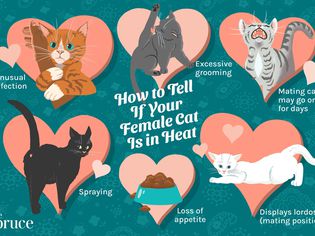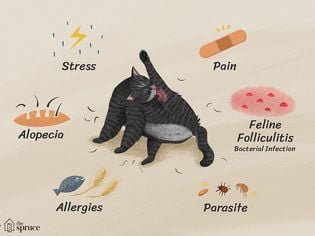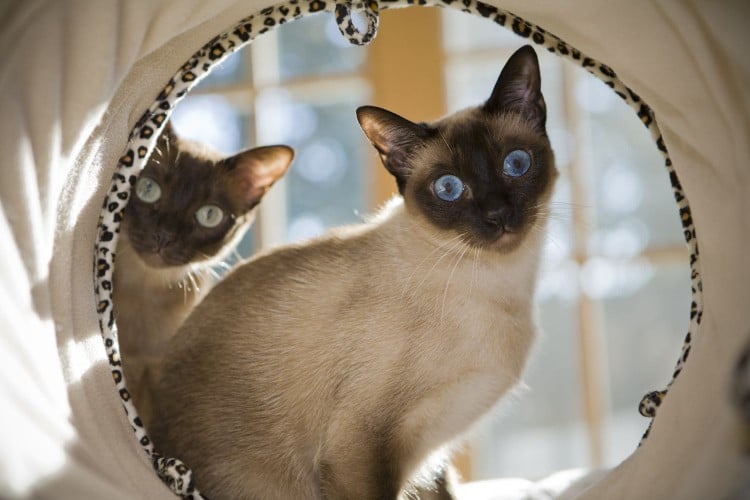Cats can get frostbite, just like people and other animals. Though their winter coats will protect them to some extent, cats can easily get too cold in extreme temperatures. You may be wondering how stray and fetal cats survive the winter—sadly, some of them don't.
Fortunately, frostbite is not common in cats, probably due to the fact that cats are experts at finding places to take shelter. If your own cat goes outdoors, you'll want to take steps to keep them as safe as possible. Here's what you need to know about frostbite in cats.
What Is Frostbite in Cats?
Frostbite is skin and tissue damage from exposure to cold temperatures. In cats, frostbite typically affects the extremities and thinly haired body parts such as the ears, nose, eyelids, tail tip, and paws. The fluid within the tissues can swell and freeze, which interferes with circulation. Frostbite, if severe enough, can cause permanent tissue damage that may lead to the loss of a limb or other body part.
Symptoms of Frostbite in Cats
The symptoms of frostbite vary depending on the affected area and the severity of the damage. The frostbitten area will feel cold to the touch and may also feel brittle or firm. Touching the area will likely cause pain to the cat. Blisters or ulcers may develop on the skin. You may notice that the skin appears discolored—it may be blue, gray, or pale. If major damage has occurred, the skin may be black, which is a sign of necrosis (tissue death). You may also notice that your cat is hiding or acting out of character.
Causes of Frostbite in Cats
Frostbite happens when a cat is exposed to the cold for too long. This can happen from spending too much time in frigid temperatures or by staying in direct contact with a cold surface. Exposure to very cold water can lead to hypothermia (low body temperature) and frostbite—something that can easily happen if a cat falls into an icy lake or pond. Hypothermia and frostbite develop more rapidly if the fur is wet.
Hypothermia
When a cat gets too cold, blood flow gets diverted to the body's core to maintain warmth and protect vital organs. This decreases the blood flow to extremities such as the ears, paws, and tail. The tissues and fluids within these extremities can actually begin to freeze, leading to tissue destruction.
Prolonged Direct Contact With Cold
Frostbite can occur in an extremity if it remains in contact with a cold surface or cold water, even if the cat has a normal internal body temperature. Dangerous surfaces include ice, snow, and even cold metal. Direct contact can actually freeze the tissues and cause serious damage. Frostbite may even occur when ice packs are used directly on the skin.
Diagnosing Frostbite in Cats
If you suspect your cat has frostbite or hypothermia, contact your veterinarian immediately. Never attempt to treat frostbite without specific instructions from your vet. It's important to act fast to prevent further tissue damage. Left untreated, frostbite can lead to infections and even the loss of a body part.
After conducting a thorough examination, your vet will determine if further testing is necessary. This may include blood tests to look for internal problems caused by hypothermia. If an infection is suspected, your vet may collect a sample to send out a culture and sensitivity.
Warning
If you suspect frostbite or hypothermia, bring your cat indoors to a warm area. Do not massage the affected area as this can cause further tissue damage. Provide warm blankets or towels, but do not apply direct heat or topical medications (including hair dryers). Contact your vet immediately for further instructions.
Treatment
Your veterinarian may recommend a number of treatments depending on the severity of the frostbite. This is a painful condition, so your vet may begin by giving pain medication. Additional treatments may include:
- A cone (e-collar) to prevent licking of the injured area
- Warming methods (if the area is still cold or the cat has hypothermia), such as warm intravenous fluids
- Antibiotics to treat infection of damaged tissue, if present
- Topical medications to help heal and protect the area
- Surgery to remove damaged tissue (may include amputation)
Hospitalization may be necessary for cats with moderate to severe frostbite. Be sure to follow your vet's instructions for home care and follow-up visits once your cat gets home. Do not allow your cat outdoors until all injuries are healed and the weather is warmer.
Prognosis for Frostbite in Cats
Fortunately, cats typically recover from frostbite if they get proper veterinary care. Unfortunately, serious infections can develop and can even result in death in extreme cases. Permanent damage is possible, especially if the frostbite was severe. The cat may need the limb or affected area surgically removed. If a limb is lost, take comfort in knowing that cats will gradually adjust to life on three legs with some assistance from you.
How to Prevent Frostbite
The best way to prevent frostbite in your cat is to keep your cat indoors during cold weather. If your cat must go outside, provide a warm shelter with access to water and food.
Take steps to protect your cat in cold weather. If it's below freezing or the wind chill is low, keep your kitty inside or limit supervised outdoor time to five minutes. While outside, prevent your cat from standing on icy surfaces or approaching frozen bodies of water.
A coat or sweater can help prevent general hypothermia and booties can protect the feet. However, most cats will reject the notion of wearing any of these things, especially boots. You should not put clothing on a cat that goes outdoors unsupervised as the clothing can get caught on things and trap the cat.
Also, consider keeping a pet first-aid kit handy that includes warm packs.










Comments on " Fact or Fiction: Can Cats Get Frostbite?" :